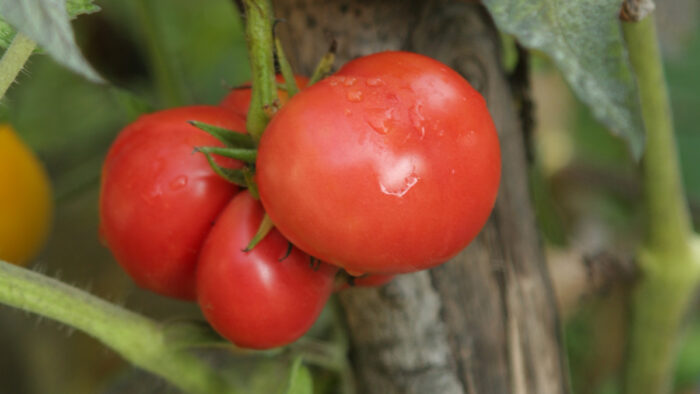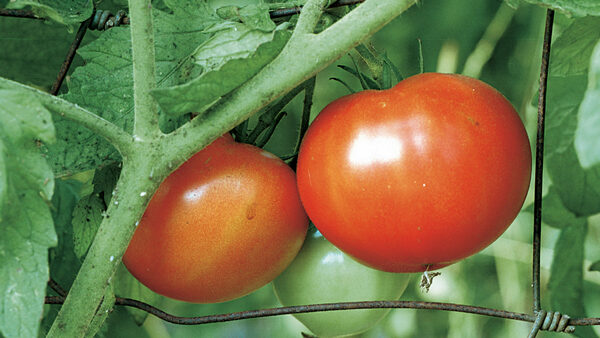
If you have ever found yourself disappointed by the tomato harvest from your garden, you are not alone. There are around nine bacterial diseases of tomato, nearly two dozen fungal diseases, several dozen more viral and viroid diseases, and no small number of genetic, nutrient, and physiological disorders. With these tomato troubles lurking about, even the most experienced tomato gardeners can encounter a disappointing year.
The major key to overcoming these tomato woes is proper diagnosis. Many tomato diseases and disorders present similar symptoms, which can lead to a great deal of confusion—as is the case with early blight and late blight of tomatoes, for example. Confusing the two “blight” diseases is counterproductive. Tomato early blight is a common fungal pathogen, while tomato late blight is an unrelated, nonfungal pathogen that is less common but of much greater concern. The two require different management strategies.
 |
 |
The best way to get an accurate diagnosis is through a Cooperative Extension–based plant diagnostic clinic, available in most states. Having confirmation of the disease(s) in your garden not only helps you learn what the disease looks like, but most accurately guides your decisions for management and choosing resistant varieties next season. Even to the highly trained eye, diagnosis of most tomato diseases requires laboratory work.
Because of the crop’s popularity across both agriculture and the home garden, most state Cooperative Extension services also have excellent regionally specific fact sheets and blog articles about tomato culture and pest management. These resources are particularly useful because they are usually written by local experts who are familiar with the common problems of their region. To find them, search online using keywords such as “Tomato disease symptoms Ext.” Or better yet, throw in the name of a specific disease or your state. Adding “Ext” into your search is a pro tip that puts all the websites from state extension services at the top of your search results and greatly helps filter out less reliable results.
One of my favorite resources can be found quickly by searching online for “Cornell Tomato Diagnostic Key.” This website allows you to narrow down pests and disease symptoms based on what part of the plant is affected. The tomato crop page at Penn State University’s PlantVillage website also has very helpful information on worldwide pests of tomato, including insects and mites. Another favorite resource is the Seminis Tomato Disease Field Guide, a 168-page eBook you can find online by a quick search. If you want a professional resource filled with excellent photographs and descriptions of all major tomato diseases and disorders, including nutrient and physiological symptoms, look no further. And the best part—it is available for free!
—Matthew Borden, DPM, is a plant health consultant specializing in diagnostics and integrated management of landscape plant pests and diseases.
To learn more about tomatoes and about their diseases, check out these articles:
- A Tale of Two Tomato Blights – Issue 205
- What’s Wrong With Your Tomatoes? – Issue 151
- How to Support Tomatoes – Issue 86
- Why It’s Important to Prune Tomatoes
- Expert Picks: The Best Tomato to Add to Your Veggie Garden – Issue 198
Fine Gardening Recommended Products

VegTrug Classic Cold Frame
Fine Gardening receives a commission for items purchased through links on this site, including Amazon Associates and other affiliate advertising programs.

Nesco Snackmaster Express Food Dehydrator
Fine Gardening receives a commission for items purchased through links on this site, including Amazon Associates and other affiliate advertising programs.

The New Organic Grower, 3rd Edition: A Master's Manual of Tools and Techniques for the Home and Market Gardener, 30th Anniversary Edition
Fine Gardening receives a commission for items purchased through links on this site, including Amazon Associates and other affiliate advertising programs.



















Comments
Log in or create an account to post a comment.
Sign up Log in